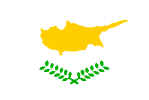


ΚΥΠΡΟΣ
CYPRUS
|
|
|
|
|
|
AMMOCHOSTOS
|
|
(FAMAGUSTA)
|
Engomi, Salamis, Arsinoe, Constantia, Ammochostos, Varoshia – names removed in time, but slightly, if at all, in space. It’s inhabitants the same for 37 centuries created a city characterized by an incessant historical continuity. Of this, only very few cities throughout the world can boast.
According
to the historian Andros Pavlides, the few survivors of the two great earthquakes
in 332 and 342 originally used the word “Ammochostos” as an adjective.
Ammochostos literally translated means “the city buried in the sand”. The
word Ammochostos became a noun proper only during the 4th century,
when those few survivors started to rebuild their houses next to the richly
covered by sand ruins of Salamis.
The
town was transformed enormously around the 13th century B.C., with
the coming of the Achaeans of the Aegean. Public buildings were erected, streets
were constructed and walls were raised.
Ες
γήν
εναλίαν
Κύπρον,
In the sea-kissed land of Cyprus
ου
μ’
εθέσπισεν
οικείν
where Apollo ordained me to live
Σαλαμινα
θέμενον
της
Salamis there in honour of my
εκεί
χάριν πάτρας.
fatherland
Τεύκρος
Teucer
Ευριπίδου
«Ελένη» Euripides “Helen”
Around
the beginning of the 11th century B.C., the town of Engomi begun
declining, either due to internal strife or to natural causes, while its
population started moving towards the coast establishing a new centre there.
This movement coincided with the arrival of the legendary founder of Salamis,
Teucer, and the Trojan hero, brother of Ajax.
Salamis
became one of the most important cities in Cyprus, particularly during the
classical era and its
magnificent remains bear witness to the fact.
Salamis was destroyed by earthquakes in 332 A.C. and 342
A.C. and its largest part submerged into the sea.
v Arsinoe
Arsinoe was founded around 274 B.C. and survived until the first half of the 4th century A.C. whereupon it must have been destroyed by the earthquakes that brought Salamis down. It owes its name to Ptolemy’s Α΄ wife and sister, Arsinoe. We do not know much about Arsinoe, as it is estimated that it was built on exactly the same sight that modern Ammochostos (Famagusta) is built and in view of this, those earlier remnants have disappeared, or if they exist, they are found beneath the existing city thus preventing further archaeological excavations.
Salamis was rebuilt by Constantios (337 – 361) who relieved all survivors of earthquakes from taxation for four years. The city, which he renamed Constantia, soon managed to reach a relatively high level of development, becoming a metropolis, i.e the capital of Cyprus. During the years of conflict between the Arabs and the Byzantines Constantia suffered greatly from Arab raids. The Arabs successively looted the city, until the few inhabitants that remained moved away to Arsinoe.
v
Ammochostos
Around the middle of the 10th century, when Constantia/Salamis had already fallen into ruins due to the Arab raids, a new settlement, Ammochostos, started developing a little further away from the coast but, for obvious reasons, near the natural harbour. The exact spot chosen for the new settlement by the survivors of the raids was protected by the small islands around the harbour, which were also fortified. Apart from that, the ground was solid and rocky which helped for the construction of walls.
By the end of 11th century, the Byzantines gave trade privileges to Venetian and Western merchants who settled in Cyprus and Famagusta was promoted as a significant trade transportation centre, thus later on becoming one of the richest cities of the world.
Through the centuries that followed, Cyprus was subjugated to many conquerors. King Richard I of England conquered the island in 1191 and in the same year transferred it to the Order of the Temple in Jerusalem, and later on to Guy de Lusignan, ex-king of Jerusalem. Ammochostos was fortified by King Henry II of the House of Lusignan (1284 – 1324). It was during this time that Ammochostos reached its climax of fame through trade industry, arts and crafts, eventually becoming the chief port for East and West trade. Travelers during the medieval period comment about Cyprus and its cities. The following excerpt about Ammochostos from the “Excerpta Cypria” by Ludolf, priest of the Church of Suchen in Westphalia “ It is the richest of all cities, and her citizens are the richest of men. A citizen once betrothed his daughter, and the jewels of her headdress were valued by the French Knights who came with us as more precious than all the ornaments of the Queen of France. A certain merchant of this city sold to the Sultan a royal orb of gold, and thereon four precious stones, a ruby, an emerald, a sapphire and a pear, for sixty thousand florins; and anon he sought to buy back that orb for a hundred thousand florins, but it was denied him.”
The importance of Ammochostos declined during the Genoese occupation
between 1372 and 1464. Following on, the sovereignty over Cyprus was transferred
to Venice in 1489. The Ottoman Turks conquered Ammochostos in 1571 after a
nine-month siege. Three years later they forced all Greek inhabitants out of the
walled city. The displaced Greeks settled in the outskirts of the town and the
new settlement, which with time grew larger than the walled city, became known
by the name of Varoshia.
Cyprus
was taken over by the British in 1878 and was proclaimed a British colony after
Turkey entered the First World War against England and her allies.